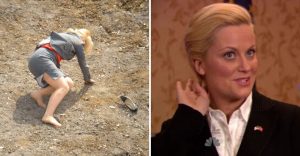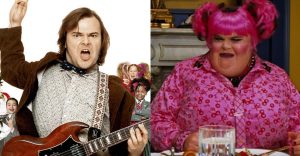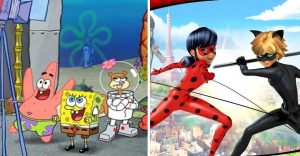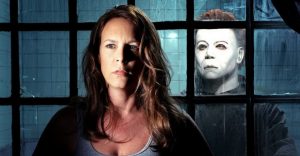17 TERRIBLE Scenes In Amazing Movies
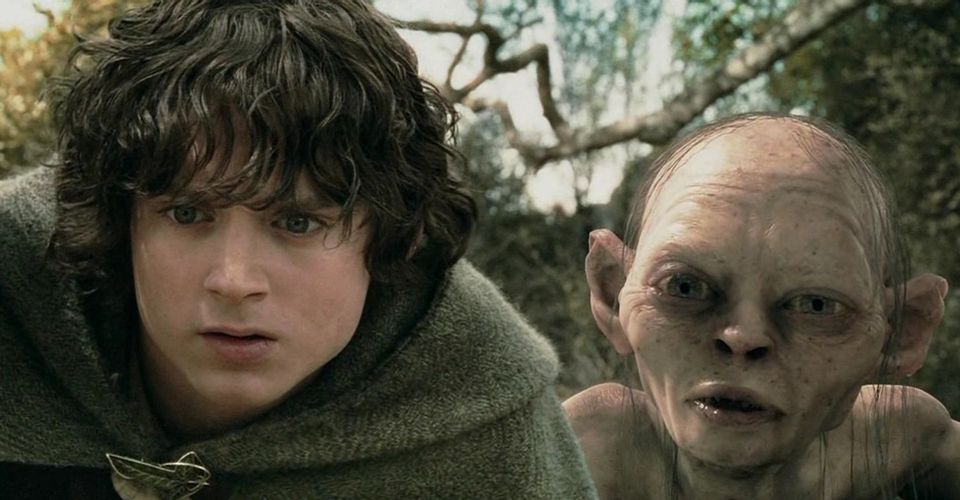
Even the greatest masterpieces contain the tiniest imperfections.
Michaelangelo’s The Last Judgment draws visitors from all over the world to the Vatican City, eager to see the masterpiece that adorns the ceiling of the Sistine Chapel – but even that has its imperfections. Take a closer look at the section chronicling the Creation of the Sun and Stars, and you might spot the artist’s rendering of God’s butt poking back out at you. Borderline blasphemous, there isn’t an official within the Vatican who wouldn’t rather see the section airbrushed from history.
And it’s the same for many a classic movie. While these much-loved films manage to get most things right, even the very best cinematic piece of art contains the occasional blemish. Maybe it’s a scene that just feels a little out of place, a plot line or character that’s aged badly, or even just something which, when analyzed in the cold light of day, simply sucks.
The films on this list are all established classics that garnered rave reviews on release and remain popular among movie-lovers the world over. But they are also films that, on occasion, have been guilty of falling a little flat in certain places. Here are 17 TERRIBLE Scenes In Amazing Movies.
17 The Breakfast Club – The Makeover

The Breakfast Club is the undisputed jewel in the crown for John Hughes fans. And despite its 1980s origins, the movie stands up pretty well today, touching on timeless high school tropes like the experience of being the social outcast or the trials and tribulations of life as a jock.
Watching it back now is still a hugely enjoyable experience, which is more than can be said for Hughes’ other classic of the era, 16 Candles, and the portrayal of Chinese foreign exchange student Long Duk Dong. One scene from The Breakfast Club hasn’t aged all that well, however: the one that sees Ally Sheedy’s Allison undergo a makeover to turn her from kooky basket case into a “beautiful” girl. It’s all okay though, because the makeover succeeds in catching the attention of Emilio Estevez’s Andrew. What’s the message here? Must women really conform in order to get the guy of their dreams? No, that’s not cool.
16 Harry Potter and Deathly Hallows – Epilogue

The Harry Potter films were, by and large, pretty enjoyable affairs. Harry Potter and The Deathly Hallows was also a fine way to bring the curtain down on the franchise, even if it did feel a touch overstretched over two films. Still, when the film reaches its long-awaited climax with Harry taking on Voldemort, it’s absolutely thrilling stuff. The ensuing battle is a satisfying conclusion for fans too, most of whom have sat through eight movies to get to this point.
With Voldemort defeated, Harry, Hermione, and Ron are free to live out their lives in peace. But rather than leave that blissful future to the viewer’s imagination, someone came up with the bright idea of including an epilogue set 19 years into the future. The resulting scene is dull, sappy, and a touch cringeworthy, with Daniel Radcliffe and the gang made up to look much older. It just doesn’t work.
15 Boyhood – The Ending

Richard Linklater’s Oscar-winning drama chronicles the development of a boy from the age of six through to 18. It’s made all the more unique by the fact Linklater filmed the movie’s protagonist, Mason Evans Jr (Ellar Coltrane), over the course of 12 years.
Boyhood is a touching drama that perfectly chronicles the trials and tribulations of growing up – all of which makes the film’s final scene all the more frustrating. Having landed a place at university, Mason prepares to move out of his mother’s (Patricia Arquette) apartment. In a moment of realization, she breaks down, saddened by the passing of time. It’s a poignant way to finish the film. Except Boyhood goes on to chronicle Mason’s first few days at college. The final scene, which sees Mason discussing moments in time with a new female love interest, feels heavy-handed, and is far and away the film’s worst moment.
14 12 Years A Slave – Samuel Bass

12 Years A Slave is a masterpiece. A harrowing, thought-provoking masterpiece, but a masterpiece nonetheless. It tells the story of Chiwetel Ejiofor’s Solomon Kane, a freeborn violinist tricked and kidnapped into a life of slavery. There are many fine performances throughout the film – Benedict Cumberbatch and Michael Fassbender both immediately spring to mind. Brad Pitt, as Samuel Bass, doesn’t.
Pitt’s is only a small role but it’s an important one, which makes it all the more annoying. Pitt not only lays it on pretty thick in the acting stakes as Bass, but there’s also the nagging feeling that his character, a simple farm helper, isn’t all that realistic. Would a hired worker like Bass really have gone up against a plantation master as he did in the film? Something just doesn’t add up, and the addition of Pitt in this small role proves an unwanted distraction to the film as a whole.
13 The Godfather – Sonny’s Fight

The Godfather is an undisputed classic of American cinema, and a film everyone should watch at some point in their lives. At some 177 minutes long, it’s also an epic film that warrants your attention throughout. Apart from one sequence, perhaps.
The scene in which Sonny Corleone (James Caan) violently confronts his sister Connie’s abusive husband, Carlo Rizzi, is undoubtedly both brutal and disturbing. However, the harsh reality watching it back all these years later is that it’s also poorly executed, to the point where Sonny’s shocking beating of Carlo is rendered almost laughable. For reasons unknown, director Francis Ford Coppola seemed happy to include the fight as it was filmed, despite the fact Caan can be seen missing punches and even creating his own sound effects using his hands. It’s a sloppy scene in an otherwise pristine movie.
12 The Departed – The Rat

Martin Scorsese doesn’t do bad movies, but he does do bad scenes in good movies, as The Departed demonstrates. What makes this particular scene so infuriating though is the fact that it comes in the final few moments of the film, and that it’s both entirely superfluous to everything that has happened up until that point as well as painfully on the nose.
The Departed is a film about informants, or rats, you see. There are rats within the film’s criminal gangs and rats within the film’s police force. The word rat is also used a lot throughout the movie – but that’s not enough for Scorsese. Keen to hammer home his point, the Taxi driver director ends The Departed with a random shot of an actual rat, of the rodent variety, set against the backdrop of the Boston cityscape. Because the film is about rats, right? Yeah, everyone understood that already, Martin.
11 Willy Wonka and the Chocolate Factory – Cheer Up Charlie

Johnny Depp has nothing on Gene Wilder when it comes to playing Willy Wonka. The original 1971 version of Willy Wonka and the Chocolate Factory was a suitably deranged affair, made all the more brilliant by Wilder’s performance. Much of the film’s success also rests on Charlie’s adventures within the factory and the various fates that befall his companions. It’s just a shame that viewers have to wade through some pretty slow, forgettable scenes before Charlie gets there.
The worst of these comes early in the movie, when Charlie’s mother decides to cheer her son up by singing “Cheer up, Charlie.” It’s the definition of filler – ask someone to name a song from the movie and you could be there all day before someone mentions this dud. The whole tune could be cut from the film and no one would miss it. Plus, the action would get to the Oompa-Loompas that bit quicker, so it’s a win across the board.
10 Breakfast At Tiffany’s – Mr. Yunioshi

Blake Edwards’ big screen version of Breakfast At Tiffany’s is a timeless romantic comedy that boasts Audrey Hepburn’s finest (and arguably most complex) performance. It’s a captivating affair full of iconic imagery and an instantly recognizable soundtrack. It’s such a shame, then, that Mickey Rooney nearly ruins it all. Because, whether Breakfast and Tiffany’s dedicated fan base wishes to acknowledge it or not, the movie is racist. Very racist.
Rooney plays Mr. Yunioshi. That’s right: a white American is playing a Japanese man. And not just playing him either, but portraying the character using every ill-advised stereotype you could possibly imagine. Kitted out with fake teeth and a dodgy accent, Rooney is supposed playing the role for laughs, but the only ones he is likely to generate these days are of the nervous variety. The good news is that his scenes can be easily cut – or simply skipped – without impacting the film.
9 Empire Strikes Back – Exogorth

Proof that even the greatest of all the Star Wars movies can still contain a slight miss-step comes in the form of this clanger from The Empire Strikes Back. Fans will know the scene well: Han, Leia, Chewbacca and the Droids have just escaped Hoth, and are caught in an asteroid field trying to evade the clutches of the Empire.
Han eventually sets the Millennium Falcon down on an asteroid to hide. However, it doesn’t take long before the gang realizes they are under attack from parasites and that the asteroid they touched down on isn’t an asteroid at all, but an actual giant, worm-like being called an Exogorth. Cue a scene that’s aged badly, with the Exogorth resembling a hastily put together cast-off from Jim Henson’s workshop. Sure, it’s exciting that Han is able to navigate the Falcon out of the creature’s grasp, but it’s not exactly the most menacing of foes to begin with.
8 Gravity – Kowalski’s Return

Gravity is among the most intense cinematic experiences you are ever likely to enjoy, with Alfonso Cuaron’s movie putting you at the center of a full-blown space station disaster, played out in real-time. It’s made all the more unique for the fact that it largely focuses on Sandra Bullock’s character, Dr. Stone, trying to keep it together as events spiral out of control. Sure, George Clooney’s Lieutenant Kowalski is there, but midway through the movie (SPOILER ALERT) he sacrifices himself for Stone, floating off into space towards certain death.
Except he returns a little later onboard a Chinese space station. It’s a moment that makes no sense, given the fact Kowalski already made it clear that his death was guaranteed. So most audiences would straight away guess that it is a dream or hallucination. When that’s confirmed moments later, the scene is rendered pointless, and ends up undermining the drama of Kowalski’s initial sacrifice.
7 Superman– Lois Lane’s Poem

Given the mess made with Superman Returns and Man of Steel, there can surely be no argument when it comes to choosing the definitive big screen Superman. Christopher Reeve was close to perfection, and his 1979 effort, Superman, stands as a fantastic testament to abilities in the role. It’s not without its flaws of course, and in this instance, the one slightly iffy moment comes in the form of Lois Lane’s inner monologue heard during her first flight in the arms of Superman.
It’s not that actress Margot Kidder does anything wrong. It’s more that the monologue Superman hears in her head is delivered in cringe-worthy rhyming couplets: “I don’t know who you are. Just a friend from another star. Here I am like a kid out of school. Holding hands with a god. I’m a fool.” It’s just…too much.
6 Lost In Translation – The Japanese Visitor

There’s a subtle poignancy to Lost In Translation that helped film garner critical acclaim and a passionately supportive fan base in the years since its release. Widely regarded as Sofia Coppola’s best film to date, Lost In Translation is at its very best when dealing with matters of the heart. However, the movie suffers when the action moves into more comedic territory.
Take the scene in which a random Japanese woman walks into Bill Murray’s hotel suite and orders him to “lip” her “stockings”. Murray character, clearly embarrassed, tries to get her up off the floor but the women pulls him down. An awkward and supposedly comedic scene ensues with the woman screaming the words “let me go.” Murray may be one of the funniest men on the planet, but even he struggled to wring laughs out of this awkward scene.
5 Ghostbusters – A Ghostly Visit

This infamous supernatural sexual encounter continues to be the source of much amusement to Ghostbusters fans, but still ranks as a bad scene in an otherwise great movie. The story goes that Harold Ramis originally wrote a much longer scene that gave Dan Ackroyd’s character Ray, a love interest – albeit a ghostly one. Unfortunately, the resulting scene was too long and disrupted the pacing of the film, so they decided to instead include a truncated version of Ray’s random encounter with a female apparition, which became part of a dream sequence.
The resulting scene may succeed in getting some cheap laughs among those viewers who actually grasp what is going on, but it does little to move the plot of Ghostbusters along or even develop Ray’s character, other than showing him to be a bit of a pervert. Who dreams about stuff like this?
4 Psycho – The Psychiatrist

Alfred Hitchcock’s Psycho was a game-changer when it first arrived back in 1960. Arguably the original and best psychological thriller, it presented audiences with the terrifying idea of a heinous killer hiding behind the friendly, personable exterior of a seemingly ordinary man. But Anthony Perkins’ Norman Bates was no ordinary man, and when it is finally revealed that Bates’ mother is long dead and he has been disguising himself as her to commit his bloody crimes, audiences were left in no doubt that something was very, very wrong.
That didn’t stop Hitchcock from including a scene in which that is clumsily spelled out, though. In the penultimate act, a psychiatrist arrives at the police station holding Bates to essentially explain Norman’s condition. Some may defend the scene, arguing that it helped explain the disorder to unknowing audiences, but today, it comes off clumsy and unnecessary.
3 Django Unchained – Quentin Tarantino

Quentin Tarantino is a filmmaker who makes movies on his own terms. If he wants to make a two-part, four-hour martial arts epic, he’s going to. If he wants to make a film focusing on a fictionalized version of the Second World War that ends with Adolf Hitler getting machine gunned to death, he’s going to. And if he wants to include himself in his movies, well, he’s going to do that too.
To date, Quentin Tarantino’s cameo efforts have largely consisted of small roles and the occasional voiceover. They are usually pretty harmless affairs that do little to disrupt the pace of the film. Apart from his appearance as an Australian cowboy in Django Unchained, where Tarantino pulls off the remarkable feat of being both terrible at an Australian accent and terrible at acting as a cowboy. It’s also a scene that derails the film and is entirely unnecessary.
2 Lord Of The Rings: Return of the King – Frodo’s Awakening

Peter Jackson’s Lord of the Rings movies were great but, golly gosh, they were long affairs. Nowhere was this more keenly felt than in The Return of the King, the final film in Jackson’s trilogy and a movie that goes on for about 45 minutes longer than it probably needs to.
One scene they could definitely have left on the cutting room floor comes late in the movie, when Elijah Wood’s Frodo wakes up in bed, seemingly safe and sound. This feeling is further emphasized by the scene’s strangely soft lighting and the sudden arrival of Gandalf, the other hobbits, and his Fellowship mates. They all pile in, happy as anything, with the entire gang laughing their little cotton socks off for reasons unknown. It’s lovely to give these guys their happy ending and everything, but does anyone really know what they are laughing at?
1 Interstellar – Love Transcends

The success of Interstellar lies in the fact that director Christopher Nolan is able to successfully blend complex scientific theory with awe-inspiring visuals and a plot offering genuine heart. With Nolan having been previously accused of struggling as an emotive filmmaker, the relationship of astronaut Coop (Matthew McConaughey) and Mackenzie Foy’s Murph is central to the success of the film. Nolan makes you genuinely care about Coop’s fate and whether he will finally be reunited with the children he left behind.
But while emotion is an important aspect of any film, there is always the danger of things overflowing into schmaltz. That’s where Anne Hathaway’s Dr. Amelia Brand comes in. Keen to further tie the emotional and theoretical strands of Interstellar together, Nolan has Hathway’s character reel off a monologue about how “love transcends dimensions of time and space.” Corny and cringe-inducing in equal measure, it’s the film’s only major misstep.
—
Disagree with our list? Have your say in the comment section!











